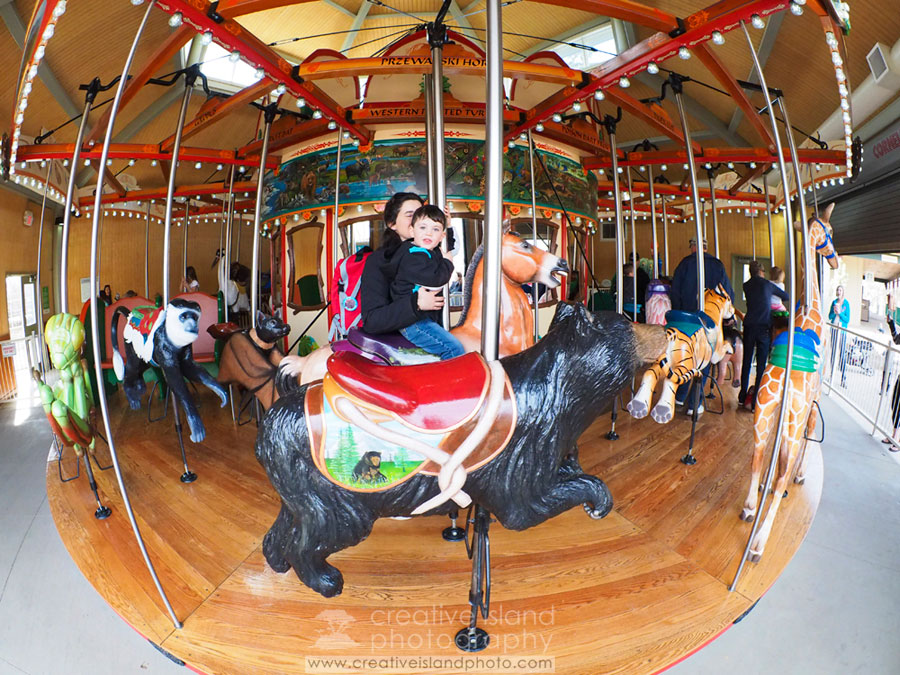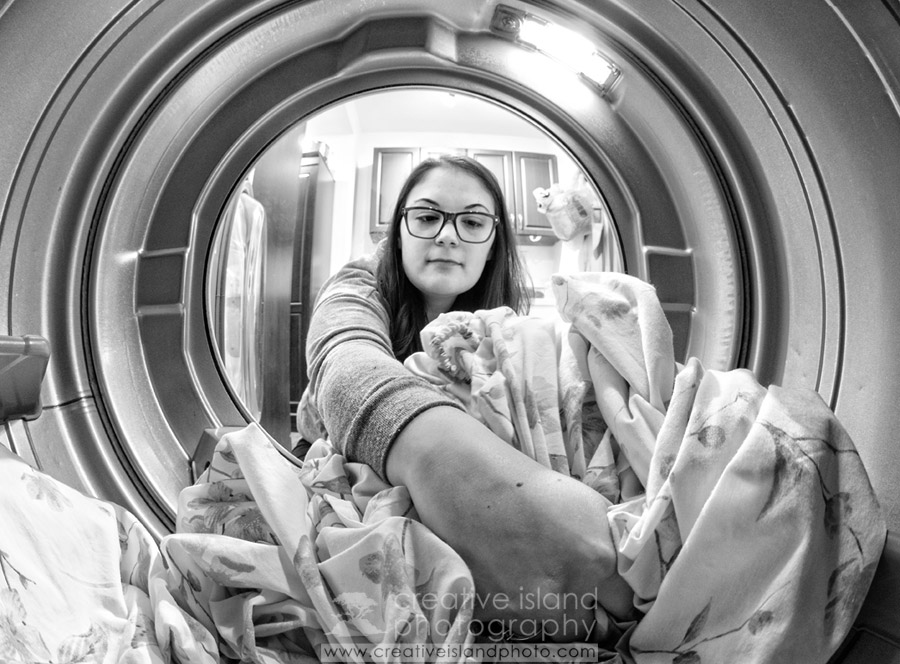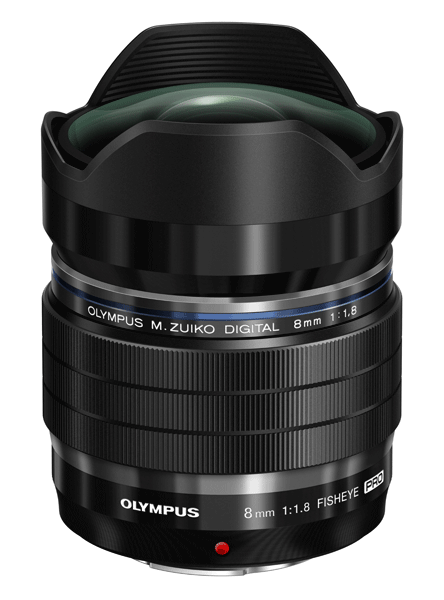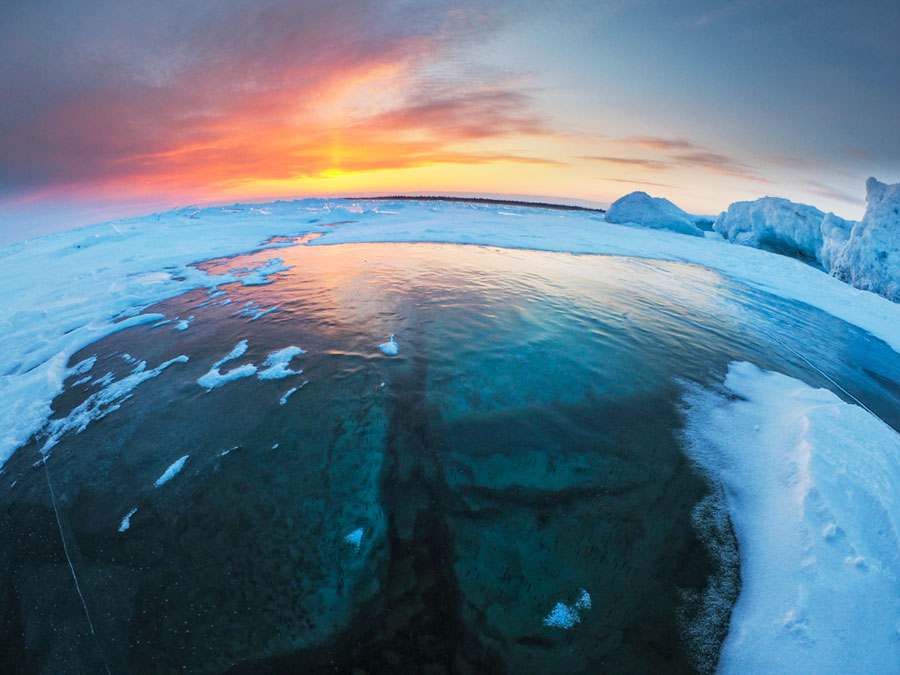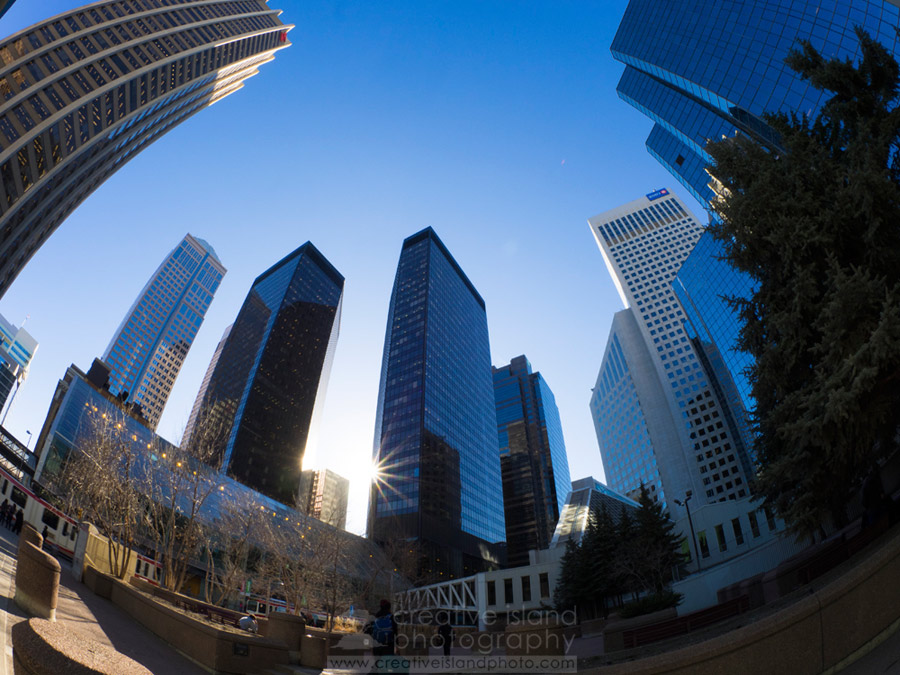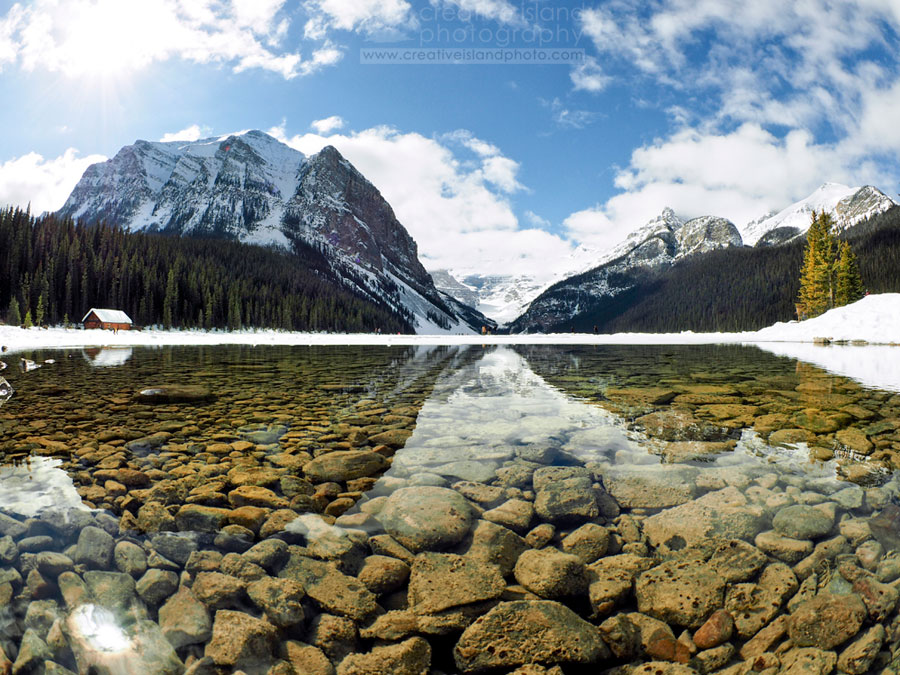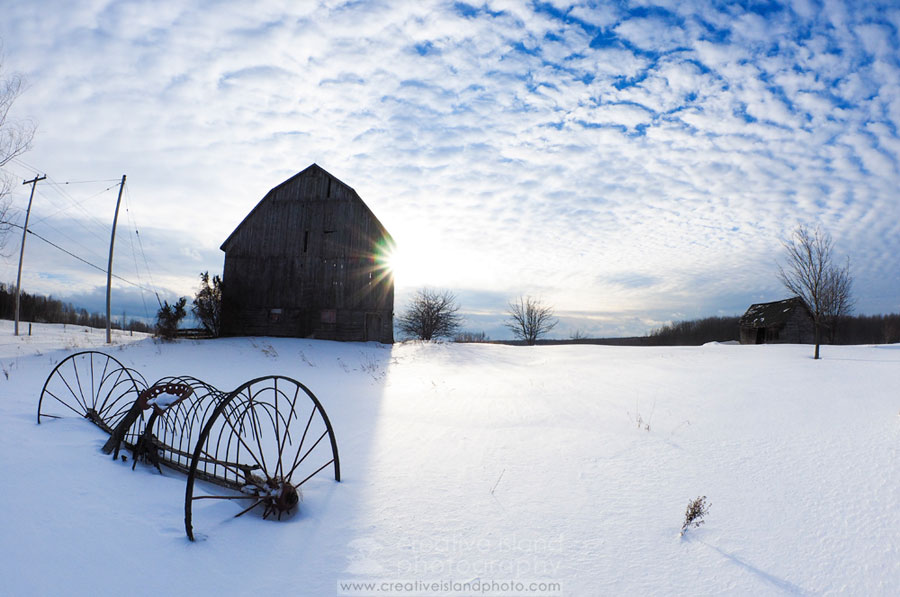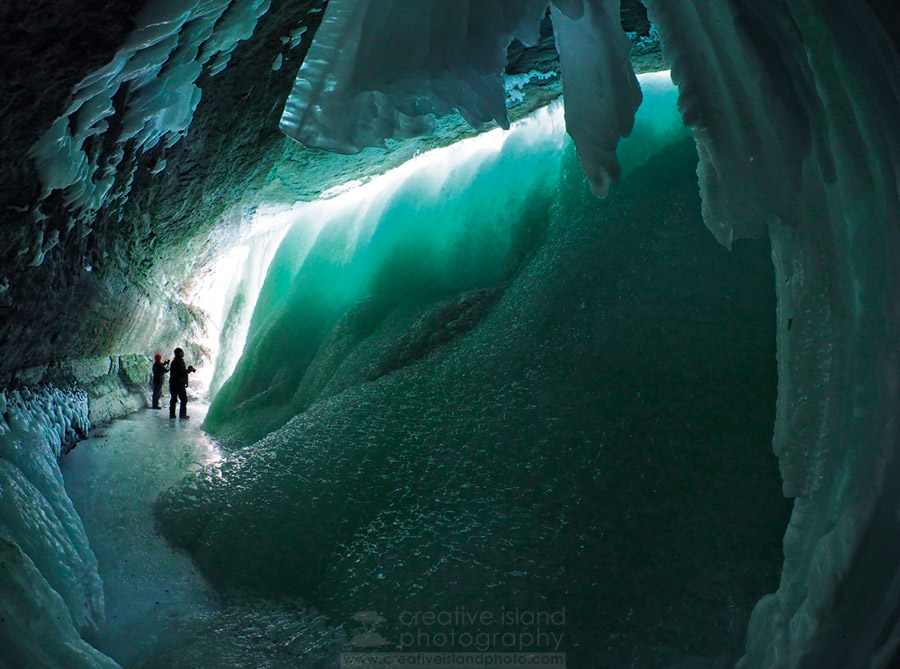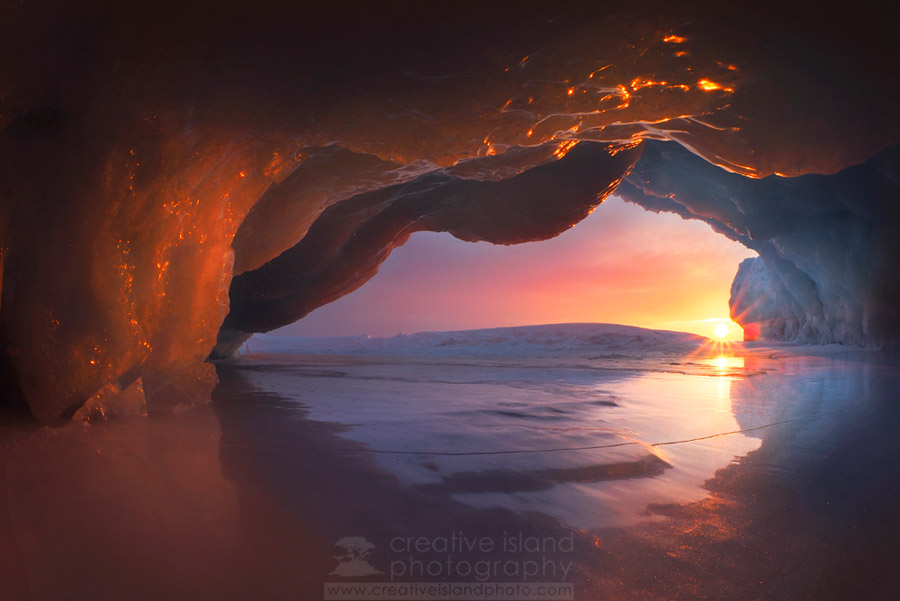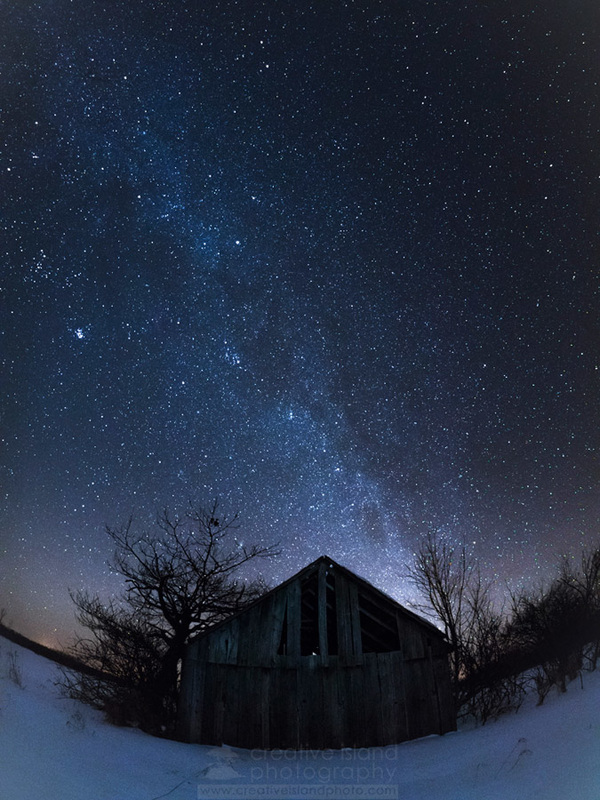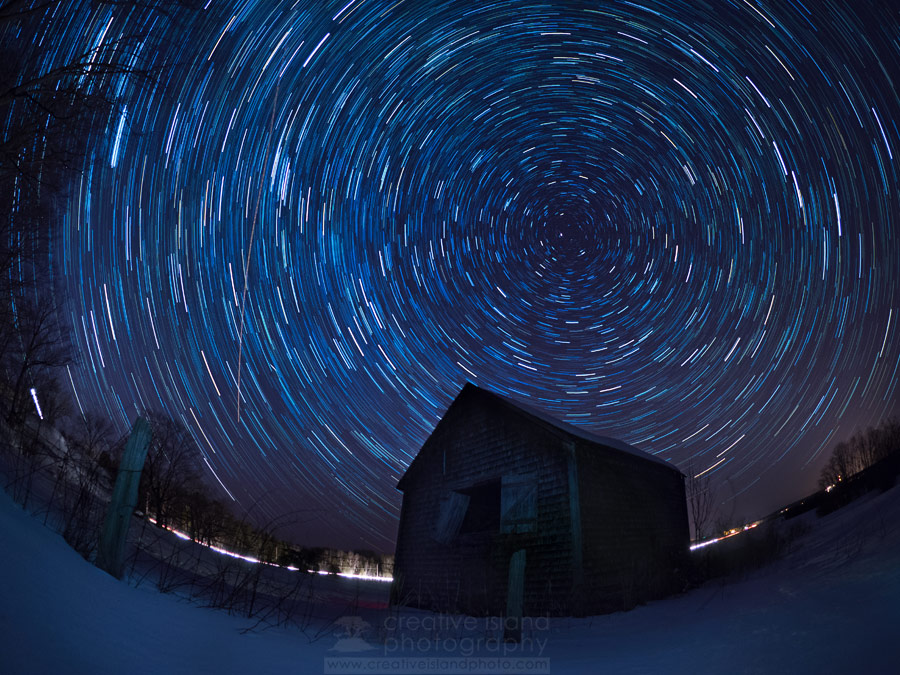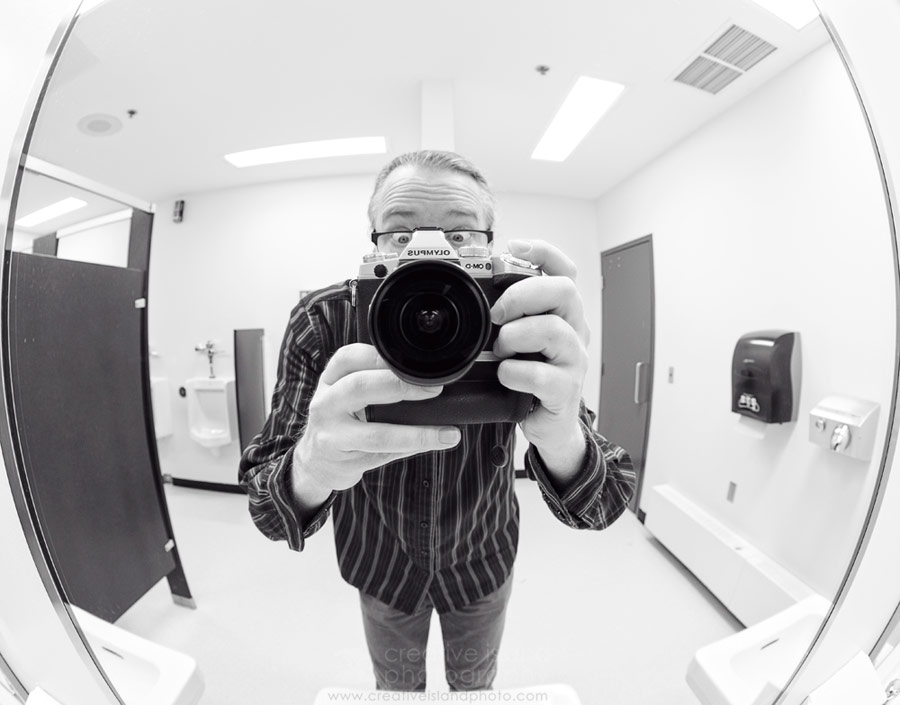|
At the end of January I received a phone call from Richard Pelkowski, Product Manager at Olympus, asking if I would be interested in shooting with a mockup of the new 8mm f/1.8 fisheye lens that Olympus would be releasing this summer. “Of course,” I said enthusiastically! Who wouldn’t agree to that request?
A week later it arrived at my doorstep and several things were immediately noticeable:
The fun...
This lens appealed to my warped sensibilities and I found myself looking for other fun ways to view the world.
As a person who has never owned a fisheye lens, it really does take some getting used to. Having a field of view of 180° totally changes your visual experience and screams, “This is so cool!” The first thing I did was walk around the house and absorb the completely distorted views of my kitchen, living room, family and pets. The field of view and incredibly close focusing distances allow you to put the camera in places you would never consider putting any other wide-angle lens.
After getting used to the fisheye view I started looking for interesting places within my own house to shoot. My first thought was the dryer (weird, I know). I mounted my E-M1 on a gorilla pod, used the OI.Share app to control the camera, threw a bed sheet in the dryer and had my daughter pretend to be unloading the laundry. It worked beautifully - great field of view and tack-sharp imagery. the serious...
After a bit of fun, it was time to use this piece of glass as a serious landscape lens. I am not a technophile or gear head per se, so I'm not going to get into too many specs here. I want good quality camera equipment that works the way it should, when I need it, and will expand my creative potential. The 8mm Fisheye does exactly that, and more. It is quite compact for a pro-quality f/1.8 lens, measuring noticeably smaller than the 12-40mm f/2.8 PRO lens. It is also weather-sealed (splash, dust, and freeze-proof) like the other PRO lenses in the line up. Of course, there are a few stats that deserve mentioning...
Over the course of 4 weeks I was able to shoot a variety of scenes under very different conditions. As a landscape photographer it does take some getting used to. The field of view is so large that there were many times that my shadow, feet, hand or other body part would end up in the image. This can also lead to some composition issues if there is a feature in the scene that you don’t want to include. But, of course, that applies to all fisheye lenses.
The other important thing to get used to is what a fisheye lens does to your horizon line (or any other lines within the image). The farther away from center, the more pronounced the curvature gets. Generally, I am not a huge fan of this effect, but there are times when it can look very cool.
Curved lines however, can be a distraction to a great landscape scene. To avoid them, good framing is critical. If you place the horizon directly in the center of the frame you can avoid the obvious distortion of a fisheye. I found the built-in level indicators on the OMD series to be invaluable.
A fisheye lens is, of course, a specialty lens. It is not your go-to lens for everyday shooting. As a landscape photographer I enjoy shooting with the 12-40mm PRO lens (and can’t wait for the new 7-14mm PRO). Where the fisheye lens really shines is in tight spaces where it is impossible to capture the whole view without one.
The 8mm fisheye has incredible edge-to-edge brightness - not an easy task to accomplish for such a compact, fast lens. When shooting at the bookends of the day it may not seem that way since the quality of the light during a sunrise or sunset would be quite varied over such a large field of view. During brighter conditions (like the shot of Lake Louise) there is absolutely no vignetting to speak of.
Aperture settings take some getting used to with any fisheye lens. You can see with some of my camera settings that, even at a relatively large aperture of f/4.5, you get remarkable depth of field. My greatest concern (and it was only relevant for one type of shooting situation) was the lack of a distance scale on the lens. You might ask, who needs a distance scale when larger apertures yield such great depth of field? Me, during astrophotography. For nightscapes, I shoot wide-open (f/1.8 in this case) and use manual focus, set to infinity. That became a real challenge. Without an infinity distance marking I had to use the rather cumbersome method of focusing on my headlamp or car lights prior to the actual composition. Even with focus-peaking it was difficult. Then if you accidently bump the focusing ring in the dark (which I did several times) you have to do it all over again. That being said, the 8mm fisheye is an excellent lens for capturing the night sky. It’s an incredibly fast lens with a great field of view - perfect for capturing a huge star field. the summary...
I am thrilled to see Olympus backing up its PRO line of lenses with such a well-built piece of glass. When I first got the lens I was excited to shoot with it - after all, I had the only one in North America. Four weeks later and that excitement had not worn off. Upon shipping the lens back to Olympus, it didn't take long for me to miss its ability to capture the world in interesting and unique ways.
As stated earlier, it is a specialty lens and has its uses and limitations, but every lens does. Personally, I can’t wait to get the production model.
9 Comments
5/11/2015 11:18:50 pm
Really enjoyed these images, Peter. You were lucky to have the lens for such a long time!
Reply
Ash
5/12/2015 03:26:59 am
Since I can't zoom into your Milky Way shot, I wanted to ask you a couple questions - how's the coma, and how's the sharpness of the stars in the corners? Thanks for your review. I'm interested in getting this lens and then de-fishing to get rectilinear images.
Reply
Peter Baumgarten
5/14/2015 10:45:52 am
Hi Ash, With the ZERO coating and the optical construction I could not detect any coma. I also don't see any difference in the sharpness between the central stars and those in the corners. It is a remarkably sharp and evenly-lit lens. I hope that helps. Cheers!
Reply
Ash
5/27/2015 03:23:02 am
Yes, it absolutely does. Thanks for the response!
Liana
5/31/2016 06:48:03 am
hi!
Reply
Dee
8/27/2016 11:24:51 am
Liana, if you're not much into settings, the Olympus OMD and the 1.8 are not the camera or the lens for you. You're better off turning it in for a point-n-shoot.
Reply
EisMann
7/13/2019 04:15:04 am
Hi, Liana, Dee,
Tom
4/4/2017 08:18:39 pm
I recently purchased this lens and can't wait for the right night sky conditions. I plan to use the olympus feature allowing me to set the focus distance at 9999.9 - infinity.
Reply
Leave a Reply. |
AuthorPeter Baumgarten is a professional photographer and educator. He is also an Olympus Visionary and NiSi Official Photographer. Categories
All
|
